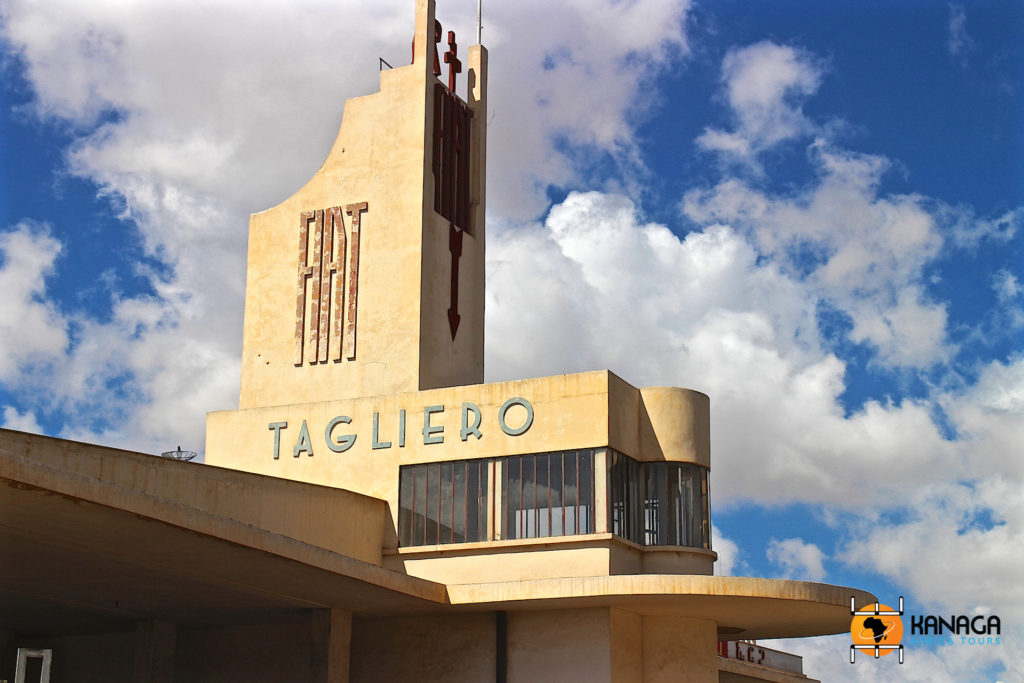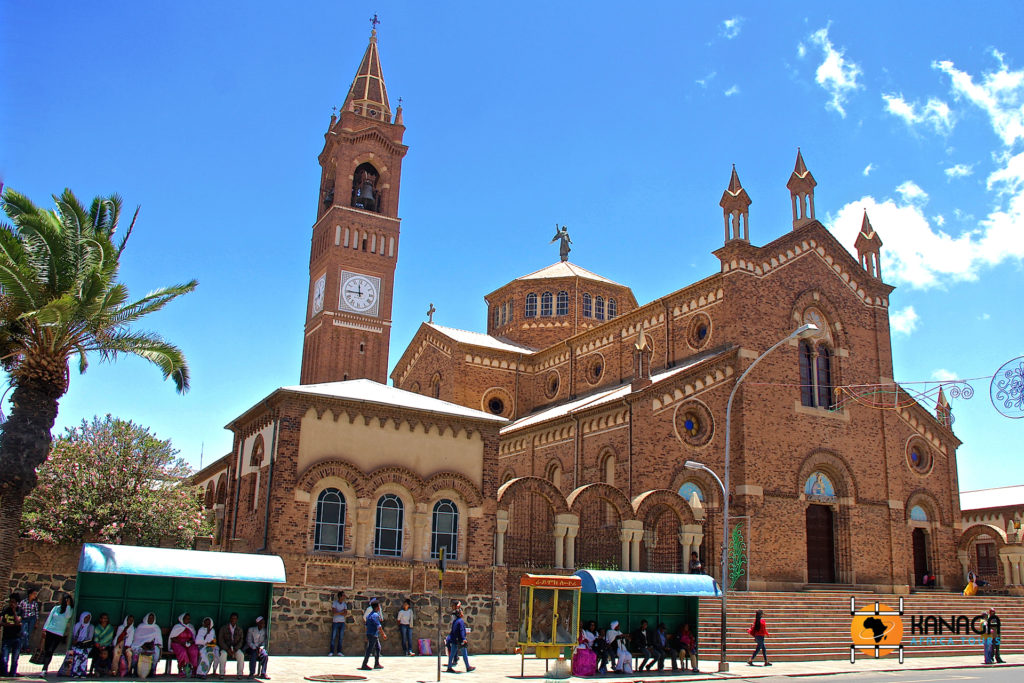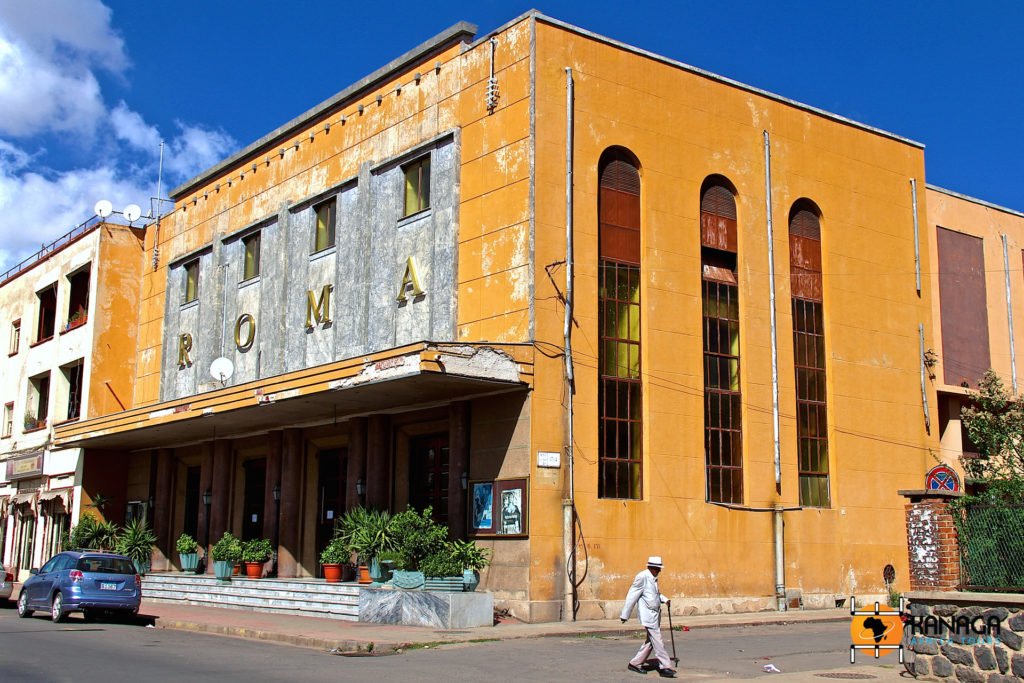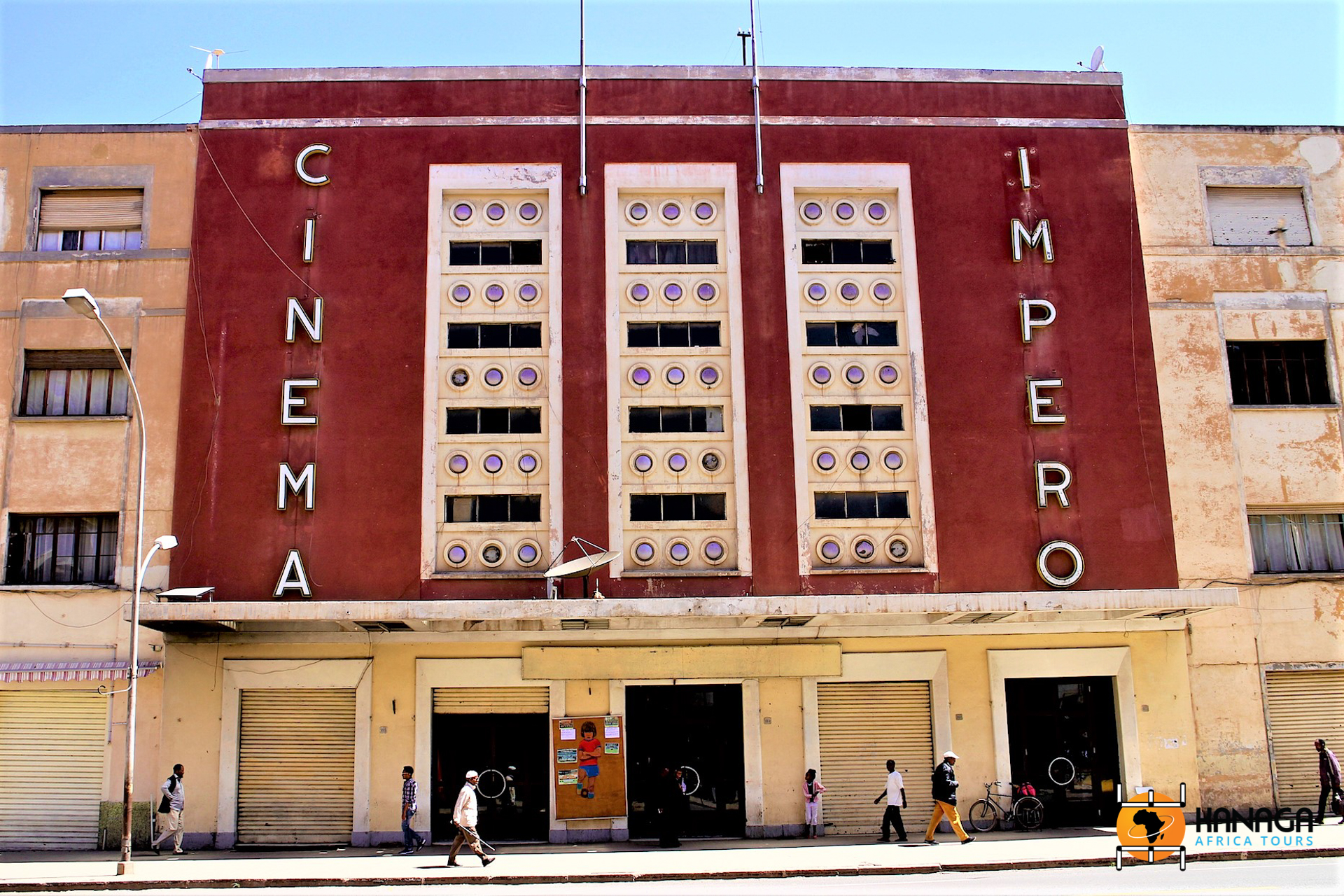© L.F. Paoluzzi
Asmara is a twentieth-century “Little Rome”, a corner of the Italian province, captured as in a “vintage” image, in the architecture, squares, signs and customs of a people, the Asmarinos, who have made their own the customs of an Italian reality partly forgotten in the motherland, but preserved intact on African soil.
This earned Asmara a place on the UNESCO World Heritage List in 2017, as an Eritrean cultural asset, but also as a testimony to an Italy that has now disappeared.
Asmara is an open-air treatise on twentieth-century architecture, in a city that welcomed all the most important avant-garde currents: Cubism, Futurism, Modernism, Rationalism, Art Deco, but also reminiscences of Art Nouveau, neoclassicism and neo-Gothicism. A mixture of different styles, which were the synthesis of the creative flair, of the Italian genius, free from the urban and architectural constraints of the motherland and who in Eritrea had “carte blanche” in the search for a “city of utopia”.
Strolling through Asmara with an ice-cream cone is a bit like finding yourself among the palaces of Garbatella or in the centre of Sabaudia, among the residential villas of the Pontine coast or the small villas of Monteverde Vecchio. The difference is that in Asmara it is not only the architectural scenery that takes us back in time, but also the atmosphere.
A full immersion in a past that seems to have crystallised on African soil, in the purity of the futurist lines of the airplane-shaped building of the Fiat Tagliero, Asmara’s symbolic service station, designed in 1938 by architect Giuseppe Petazzi, or in the old Cinematografo Impero with its art deco façade, still displaying old posters from the 1950s and 1960s bearing names such as Fellini, Totò, Sordi and Mastroianni.
Or the Opera House, a true masterpiece of 1919, in a stylistic mixture of Risorgimento, Neo-Romanesque and Neo-Classicism, with an elegant expression of Art Nouveau in the interior decorations.
In Asmara, you can enjoy a cappuccino with a croissant at Bar Zilli or sip a coffee with a glass of macchiato at Bar Tre Stelle, playing Italian-style billiards and admiring the monumental Cinema Roma. You can sleep at the Albergo Italia, the oldest hotel in the town, or send a postcard from the Posta Centrale, where time seems to have stood still in the art nouveau furnishings, making you almost want to forget the existence of the internet and send a telegram home by telegraph. Not to mention the Enda Maryam Orthodox Church, by architect Gallo, designed in the 1920s in a modernist style, but inspired by the techniques and materials of traditional Abyssinian architecture.
It is extremely evocative to retrace the theory of street furniture, signs and vintage advertising posters, unearthing the signs of a “Tabacchi di Stato”, “Mobili Cappa”, “Caravanserraglio” (today Medebar, a chaotic recycling market), “Casa degli Italiani”, or “Cinema Odeon”, “Bar Rosina”, “Club Bocciofilo” and a “Municipio di Asmara-Fognature” embossed on a cast-iron manhole cover; as well as “Postino Box” letterboxes, metal shoe-shine stands, old “Campari” posters or candy dispensers on the original wooden counter of the “Farmacia Centrale“. All reminiscences of a lost era, but which lives on, jealously guarded, in a sort of temporal and geographical re-contextualisation, all African, or rather all Tigrinya.
And it’s no wonder that you can still come across old Fiat 500s, Alfa Romeos and even Topolinos, punctually brought back to life by expert mechanics who pass on the secrets (and the Italian mechanical vocabulary) of these old models from generation to generation.
Just as it is not surprising in Asmara to be able to buy stracchino and ricotta cheese from a “pizzicagnolo”, order “pomidori” from the greengrocer and celebrate the Coptic New Year in September with panettone and araki, an aniseed liqueur similar to sambuca. But don’t worry, a tasty injera is always ready on the table, reminding us that we are in Eritrea, in the heart of the Tigrinya region.
Since the arrival of the Italians at the end of the 19th century, Asmara seems to have remained suspended in time, from the mild coolness of its 2347 metres, crystallised in an atmosphere of other times, maintaining the same urban fabric, the same architecture and decorations, the same daily customs, unchanged for almost a century.
But let us never forget that Italy’s fascist segregationism also produced the peripheral slums that are still inhabited by thousands of Tigrayans today.







